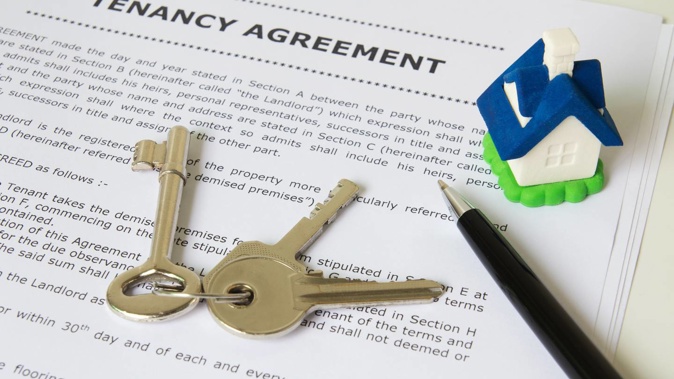
A North Shore tenant has won $6000 compensation from his landlord who rented a damp house but cited climate change as a possible reason for problems at the place.
John Williams complained to the Tenancy Tribunal that his home on Glenfield’s Bruce Rd had overflowing exterior gutters and was too damp and humid, causing damage to carpets and walls.
A “waterfall effect created by the overflowing gutters caused the dampness and humid levels to rise”, he said, showing photos of water-damaged carpet near doors and mould on bedroom walls and window frames.
The tribunal said the property’s owners, Richard and Evelyn Marsh and David Murray, did try to fix issues.
“The landlord acknowledged that the gutter was overflowing but thought it was initially to do with the changing weather patterns due to climate change,” the tribunal’s decision said.
The gutter issue wasn’t resolved until last year yet the tenancy had started in 2015.
Williams also suspected the walls were wet from the “waterfall” over the years.
The landlord in the case said the mould was due to the tenant not ventilating rooms during the winter.
Williams eventually bought a dehumidifier which showed humidity levels peaking between 70 per cent and 80 per cent on a daily basis.
The landlord engaged professionals to check for elevated moisture readings around the ceilings and the top of the walls to see if the roof or ceiling were leaking.
The inspection found the ceiling cavity showed no signs of dampness. It also noted the insulation was adequate.
The inspectors suspected the mould was due to thermal bridging – a connection between outside and inside through one or more elements that possess a higher thermal conductivity than the rest of the building envelope.
The inspection did not take any moisture reading from the walls to show if there were increased moisture levels. Williams admitted not ventilating the premises during winter but said he did ventilate in summer.
Tribunal adjudicator J Yi accepted the landlord made efforts to maintain the premises, especially in relation to the gutters, and to find out if any structural issues caused the dampness and mould issues.
“Therefore, I do not order any exemplary damages against the landlord. However, I find that due to the inherent design flaw of the gutters and the downpipes, the premises could not be kept free from dampness during winter,” the adjudicator said.
“I acknowledge that the lack of ventilating done by the tenant would not have helped the situation at all,” Yi added.
There was disagreement about when issues arose.
Williams said he complained about the dampness when it rained heavily from the beginning of his tenancy in 2015. But the landlord’s evidence was that the tenant’s first gutter complaint was not until 2017.
The landlord said the guttering was joined to one downpipe and the gutter back-flowed when it rained heavily because the ground was unable to absorb the water quickly enough.
This was a design fault and the landlord had gutters and downpipes rectified promptly on discovery.
But the adjudicator said the premises could not be kept free from dampness during winter due to those downpipes and their inherent design flaw.
The tenant won the case.
The adjudicator said the landlord should compensate Williams for having lived in the premises that were not free from dampness during winter.
A rent reduction of $50 per week for half of the year from mid-2016 to the end of January kast year was ordered as compensation.
The tribunal found that amount came to $6,000.
Take your Radio, Podcasts and Music with you









